Abstract
Reported are the results of a study of onchocerciasis in communities mesoendemic for savanna onchocerciasis in Kaduna State, northern Nigeria. The study involved 6831 individuals aged > or = 5 years who underwent an extensive screening examination for visual function including Friedmann field analysis. A total of 185 (2.7%) were bilaterally blind by acuity and an additional 28 (0.4%) were blind by visual field constriction. Also 118 (1.7%) individuals were visually impaired by acuity criteria. No criteria for visual impairment by field constriction have been established, and we therefore investigated three potential criteria. As a result, a further 60 (0.9%) individuals were identified with significant visual impairment due to field loss by the various definitions. Small islands of remaining peripheral field occurred in 50 individuals, while 40 individuals had marked reduction of binocular visual field below the horizontal meridian. Concentric visual field constriction to < 20 degrees was found in seven individuals. The WHO definition of blindness currently includes visual field damage criteria for blindness but not for visual impairment. Visual field loss is recognized as a major disability. We hope that these findings stimulate international discussion leading to the development of satisfactory definitions for visual impairment by visual field constriction.
Full text
PDF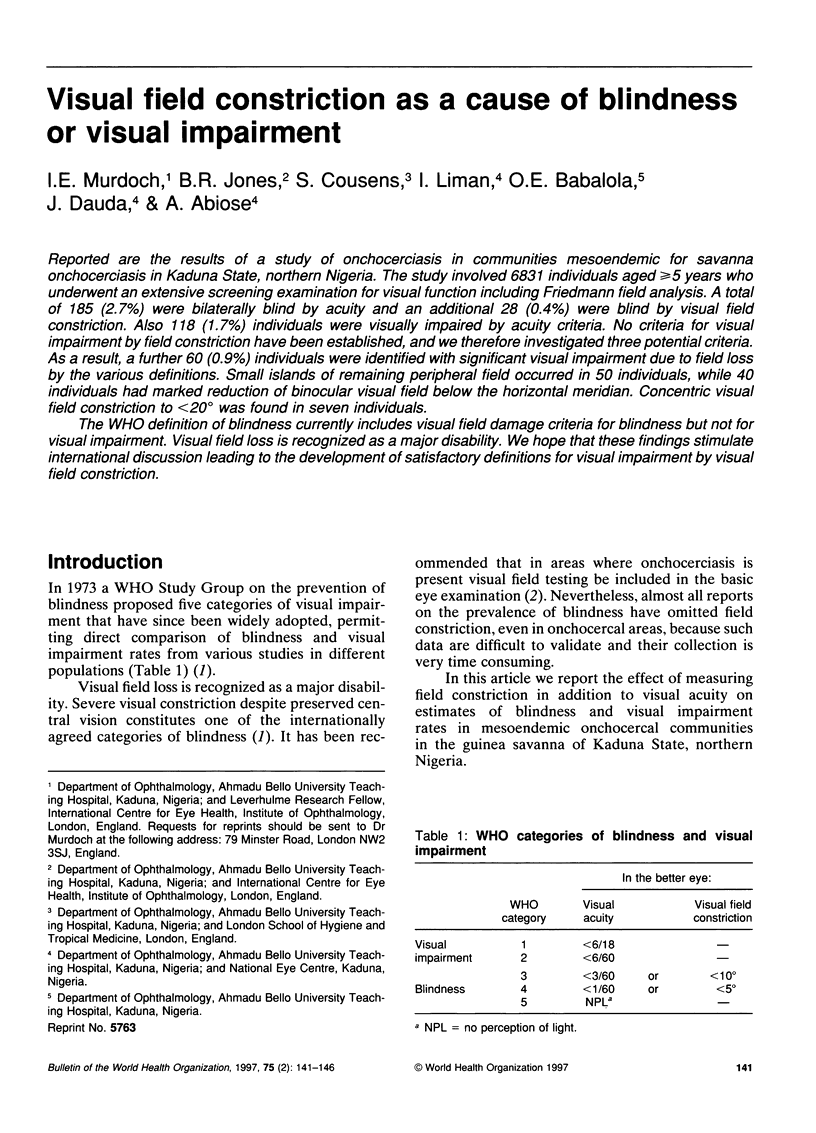
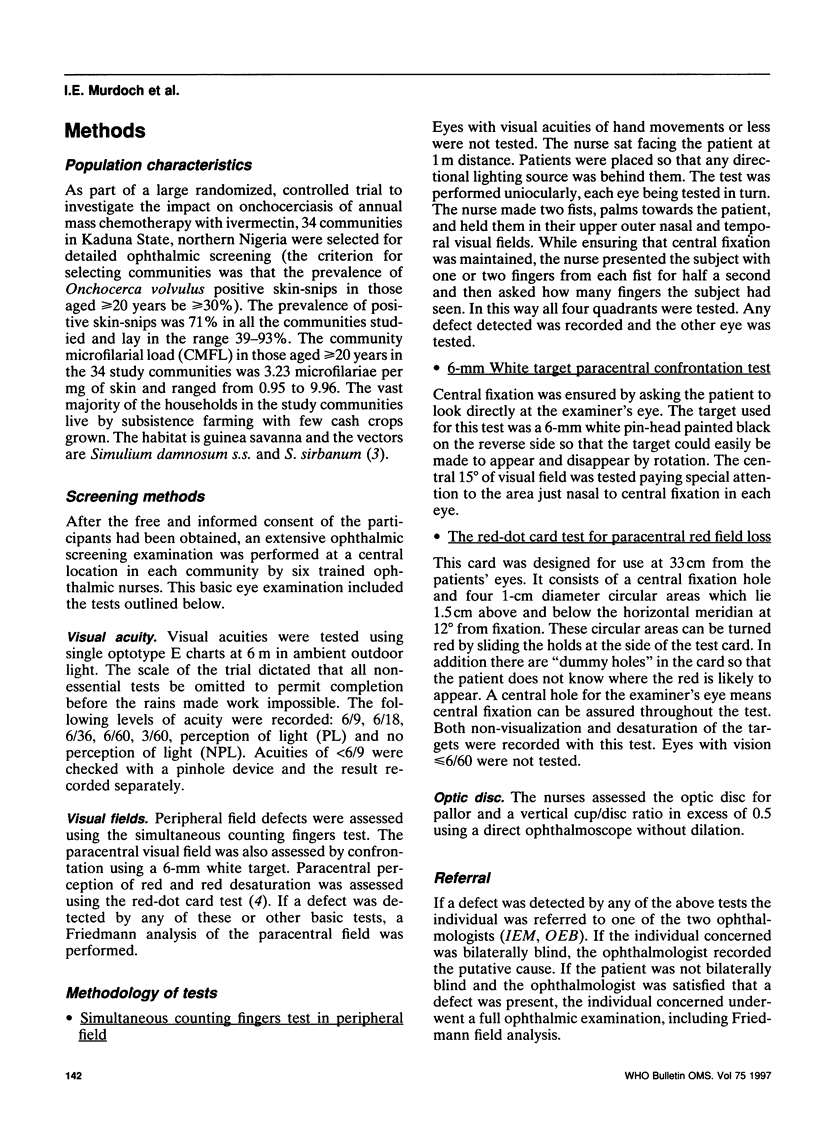
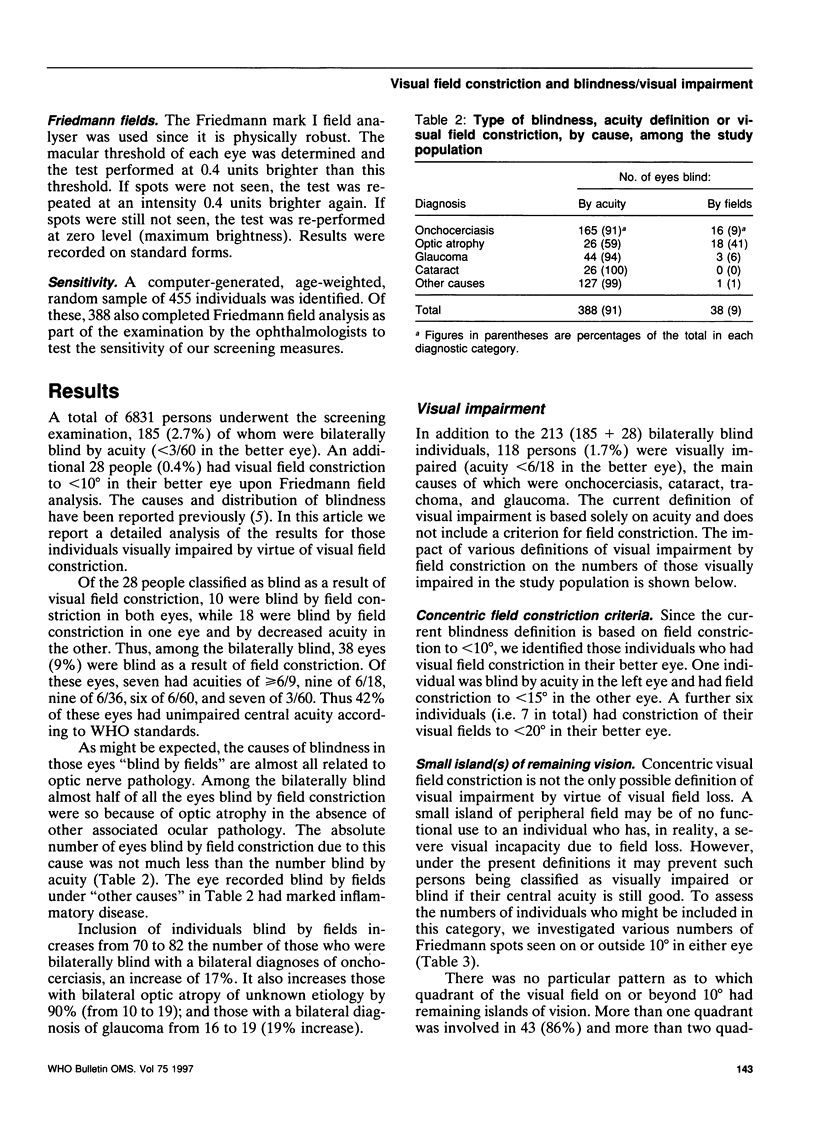
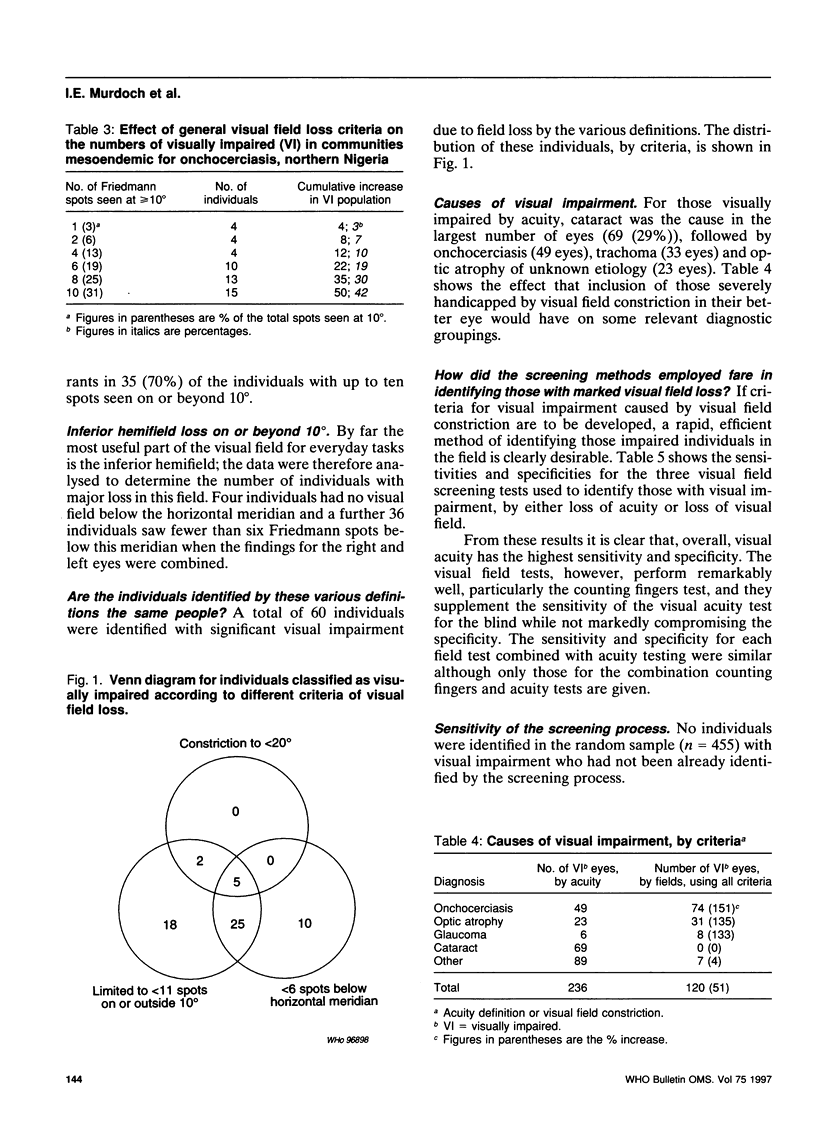

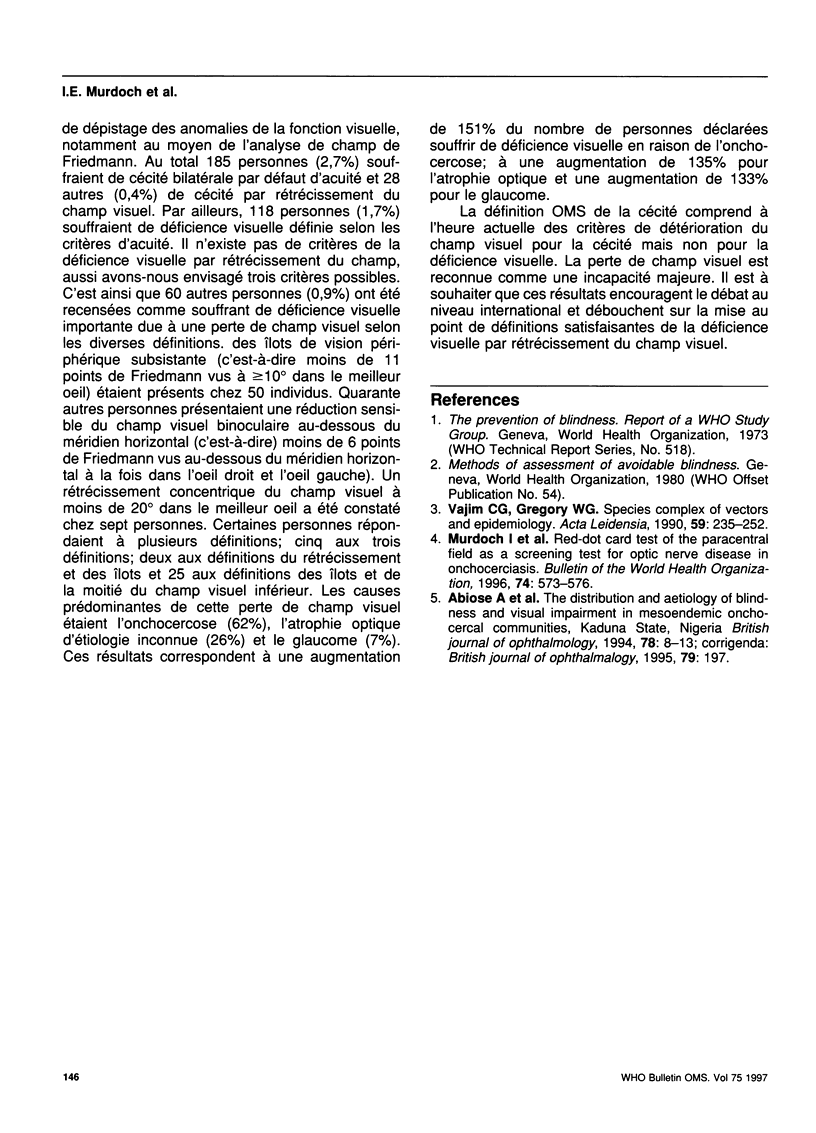
Selected References
These references are in PubMed. This may not be the complete list of references from this article.
- Abiose A., Murdoch I., Babalola O., Cousens S., Liman I., Onyema J., Evans J., Gregory W., Jones B. Distribution and aetiology of blindness and visual impairment in mesoendemic onchocercal communities, Kaduna State, Nigeria. Kaduna Collaboration for Research on Onchocerciasis. Br J Ophthalmol. 1994 Jan;78(1):8–13. doi: 10.1136/bjo.78.1.8. [DOI] [PMC free article] [PubMed] [Google Scholar]
- Murdoch I., Jones B. R., Babalola O. E., Cousens S. N., Bolarin I., Abiose A. Red-dot card test of the paracentral field as a screening test for optic nerve disease in onchocerciasis. Bull World Health Organ. 1996;74(6):573–576. [PMC free article] [PubMed] [Google Scholar]
- Vajime C. G., Gregory W. G. Species complex of vectors and epidemiology. Acta Leiden. 1990;59(1-2):235–252. [PubMed] [Google Scholar]


